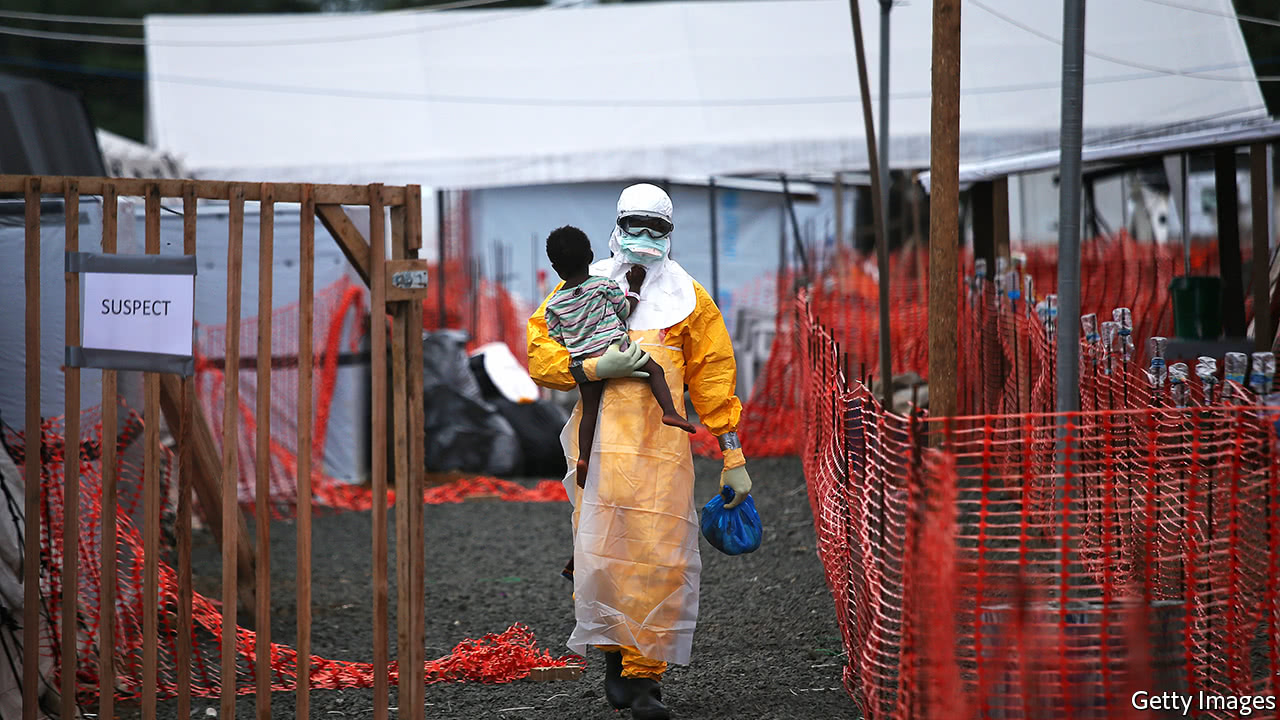The World Bank creates a new form of finance

WHEN the Ebola virus hit west Africa in 2014, it took months to get together the money needed to combat the outbreak. Donors ended up committing more than $7bn. But the money came too late and too inefficiently, says Tim Evans, who directs the World Bank’s global health practice. Lives that could have been saved were lost. The bank estimates that GDP in Guinea, Liberia and Sierra Leone was reduced by $2.8bn.
Such outbreaks are likely to become more common: they have increased in frequency and diversity over the past 30 years, in step with the increased mobility of people, products and food. The World Bank says the probability of another pandemic in the next 10 to 15 years is high. That is why it has issued $425m in pandemic bonds to support its new Pandemic Emergency Financing Facility (PEF), which is intended to channel funding to countries facing a deadly disease.
The bonds cover six viruses likely to spark outbreaks: new influenza viruses, coronaviruses (like SARS and MERS), filoviruses (like Ebola), Lassa fever, Rift Valley fever and Crimean Congo fever. Investors forgo their principal when a virus reaches a predetermined contagion level, based on rate of growth, number of deaths and whether it crosses international borders. The facility covers 77 of the world’s poorest countries.
Using bonds to insure against crisis is not a new idea. Catastrophe bonds, a $29bn market, provide coverage against hurricanes and earthquakes. But this is the first time that pandemic risk has been transferred to financial markets. Michael Bennett, head of derivatives and structured finance in the World Bank’s treasury department, says demand was unexpectedly high: the transaction was oversubscribed by 200%. Buyers ranged from specialised catastrophe-bond investors to pension funds.
But what if the pathogen is unknown, as SARS was in 2002? The bank has created a second financing pool for that. Designed to be more flexible, it is not linked to bond markets but relies on money from bilateral donors. Germany has provided an initial €50m ($59m).
Whether or not the new facility ushers in a market for pandemic insurance, it is already spurring more advanced planning on the part of governments and international responders. Rightly so. “Moderately severe to severe” pandemics cost an average of $570bn annually, or 0.7% of global GDP, according to the bank. One as severe as the 1918 Spanish flu could cost 5% of global GDP.
No comments:
Post a Comment
Note: Only a member of this blog may post a comment.